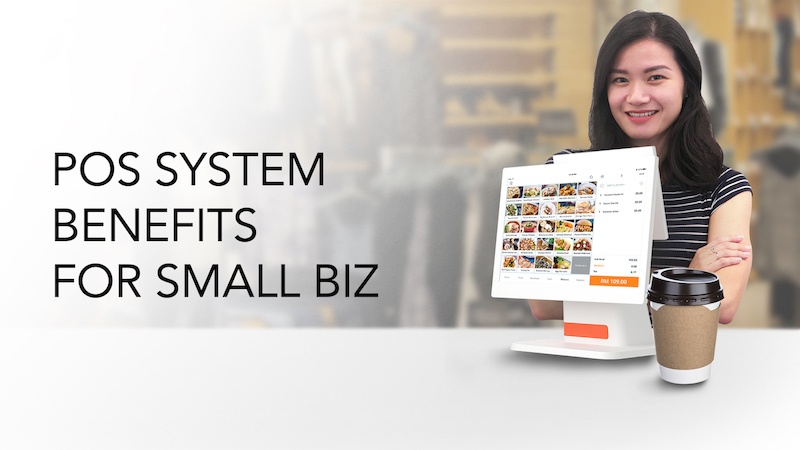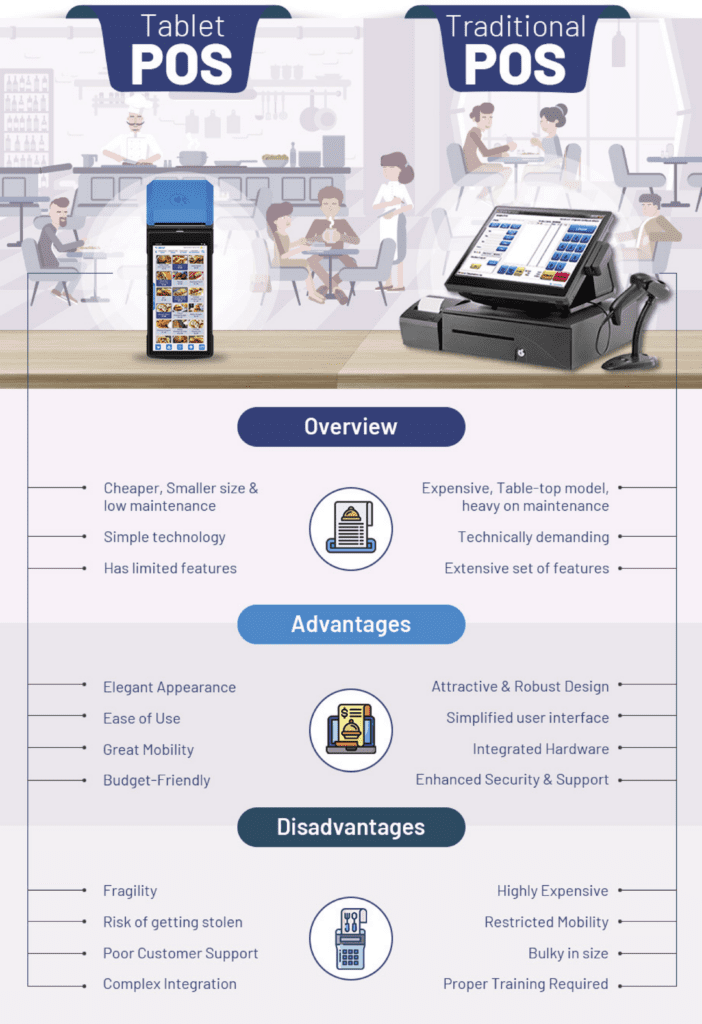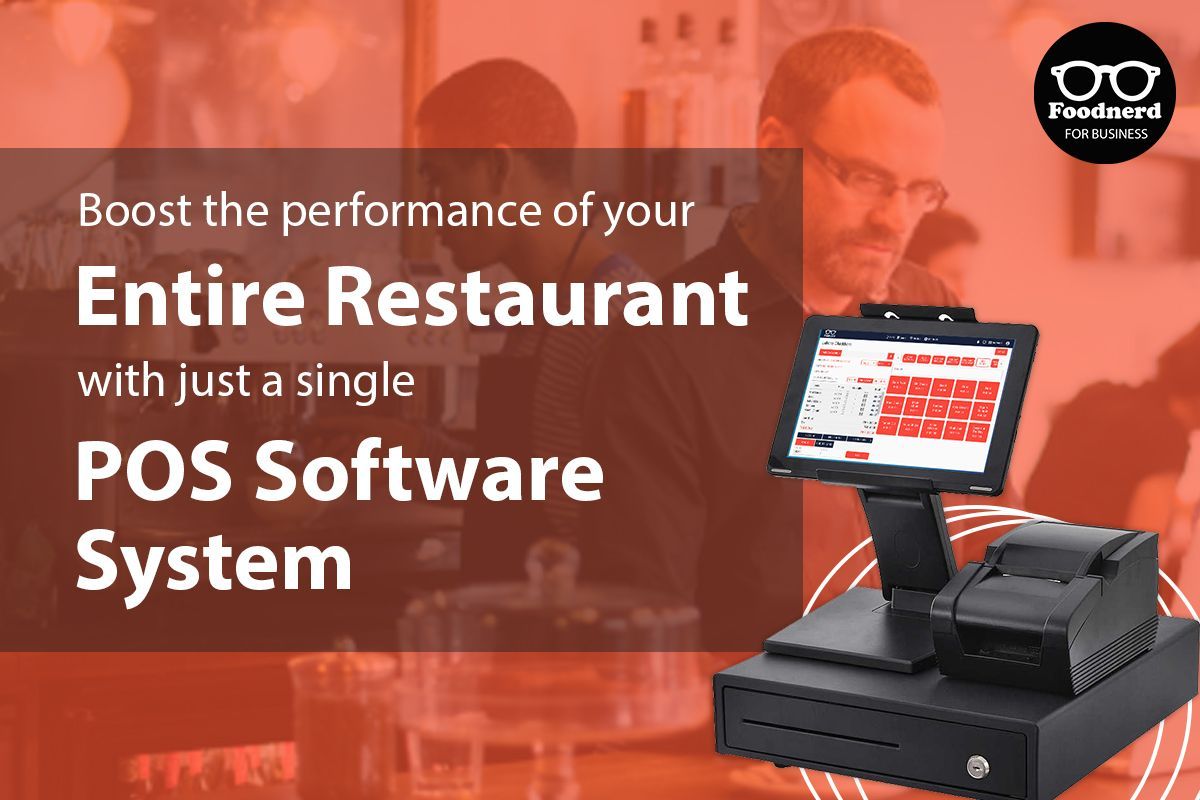The Best Strategy To Use For Best Pos System
The Best Strategy To Use For Best Pos System
Blog Article
Little Known Facts About Best Pos System.
Table of ContentsUnknown Facts About Best Pos SystemLittle Known Facts About Best Pos System.See This Report about Best Pos SystemSome Known Details About Best Pos System
For this overview, we focus on the four sorts of modern POS systems. Like its precursors, the desktop or kitchen counter POS arrangement consists of a cashier display, money drawer, thermal printer, and payment terminal. It is set up at a dealt with section of a brick-and-mortar store where clients align to have a look at and spend for their acquisitions. Customers or sales personnel can check out their acquisitions atthe station. Self-service stands usually have a touch-screen display screen, settlement terminal, and thermal receipt printer. There are optional barcode scanners and evaluating scales, such as in grocery stores. Restaurant stand POS from Clover [Picture: Clover] A multichannel POS system comes with one POS software program that operates on some or all the previously mentioned kinds. Most multichannel POS likewise have omnichannel attributes that enable companies to sync their POS information and gain access to it from a solitary system. There are three major elements of a POS system. The POS hardware captures and shows POS information. It comprises various components that, with each other, complete the transaction process. The register includes a display and keyboard(like a computer). It presents the complete deal record, consisting of the customer's repayment method and vendor details.
The cash drawer is integrated right into the POS software program, enabling the system to keep track of money transactions. Copies of purchase receipts for card repayments are also saved in the cash cabinet. An optional customer-facing display reveals the cost and superior amount as products are scanned. Without this, it's difficult to complete a client's purchase. The repayment handling solution is given by a 3rd party that can be integrated right into POS software application. When connected, the settlement software can get purchase data and demand payment from the client's resource of funds(like a bank card). A POS system stores inventory data prior to any type of transactions with customers. Integrated stock administration attribute establishes POS systems apart from sales register. It performs real-time updates to supply motion for every transaction, resulting in exact supply degrees and reports less prone to human mistake. The inventory feature can create barcodes that an incorporated barcode scanner can read. Though some providers still offer a non-integrated choice, the contemporary POS system features an effortlessly connected payment processing function. The same repayment processor is made use of for multichannel POS with mobile and ecommerce check out. POS software has a CRM feature that enables services to store consumer profiles and track their acquisition history and settlement info. Services can use this information to support partnerships with customized loyalty programs and advertising campaigns. POS software additionally feature malware security with regular automated protection updates. The settlement cpu's gateway includes machine-learning fraud detection devices to stop unauthorized transactions.

Coverage is an important feature in a POS system. While this was currently feasible with standard cash money signs up, a POS system can produce accurate records at any type of given time. Allows multichannel POS systems to have actually unified access to data regardless of where the sales happen.
There are lots of advantages in upgrading from a typical cash register to a modern-day POS system. With stock integrated right into the POS system, tracking item movement and degrees is automated. An additional benefit of automating your POS procedure with a POS system is access to real-time and accurate company data.


When POS systems are linked to third-party CRM systems like Salesforce or HubSpot, sellers get accessibility to streamlined consumer data and acquisition background that support merchants in lugging out customized promos at the time of purchase. A point of sale(POS)is the hardware and software vendors make use of to process repayments and total customer purchases. The POS system links to the cardholder's financial institution, potentially asks for a PIN code, checks funds to get rid of the deal, and validates whether the payment has been finished or denied.
10 Simple Techniques For Best Pos System
Consumers click the checkout alternative and input payment details. Two innovations: EMV chip and Near Field Interaction( NFC)technology, aid protect against deceitful purchases for POS terminals. Systems checked out encrypted data in the card and discover and decrease phony cards. These systems wirelessly approve and accredit settlement from a contactless card or repayment data kept on a smartphone, and this innovation makes certain the card data isn't saved in the vendor's system. POS systems that check inventory and buying patterns can aid merchants stay clear of consumer solution issues, such as out-of-stock sales, and dressmaker buying and advertising and marketing to consumer habits. The estimated worth of the worldwide point of sale market in 2023 click to read more (Best POS look what i found System). Customers use POS terminals as they take a look at from a shop with their acquisitions. Items near the checkout counter are normally attracting, hassle-free, and attractive for consumers. Diverse POS locations can provide sellers much more chances to micro-market certain product classifications and affect consumers at earlier factors in the sales channel. Department stores often have POSs for individual item teams, such as devices, electronics, and apparel. The initial factor of sale(POS)system was the sales register designed in 1879 by James Ritty, a barroom proprietor in Ohio. Users recorded transactions on the register, permitting for better bookkeeping and resources monitoring. Ritty sold his development to National Sales register(NCR)Firm five years later. Services frequently need client verification. In retail and business, performance and accuracy are not just objectives; they are necessities for survival and growth. This is where the integration of a POS system with supply management enters play, providing a robust service that connects the void between sales transactions and supply control. The blend of these modern technologies creates a powerhouse for services, improving operations, enhancing client satisfaction, and driving productivity. However, today's POS systems are much much more innovative than the conventional sales register of the past. They are detailed sales administration tools that take care of purchases, procedure repayments, and offer understandings into sales patterns. A POS system includes view publisher site software and hardware components. The hardware can consist of a sales terminal, barcode scanner, receipt printer, and card repayment cpu, while the software application is made to take care of the sales process, from product choice to repayment processing and receipt generation. In addition, services can establish up automatic reordering points for necessary products, ensuring that preferred items are constantly in stock. The combination gives a wealth of data that can be assessed to make informed decisions. POS supply software application can generate thorough reports on sales trends, supply turnover, and customer preferences. This information enables organizations to identify trends, forecast demand, and adjust their inventory and sales approaches appropriately. An easy to use user interface reduces training time and aids staff adapt quickly to the brand-new system. Try to find software program with an instinctive design, straightforward navigating, and clear, concise coverage. The easier the software is to utilize, the better your group can offer consumers and manage stock. Recognize the specific functions and functionality that your service requires from a POS stock system. Compare pricing models, including ahead of time costs, membership fees, and any type of surcharges
for updates or support. Make sure that the expense lines up with your spending plan and the value that the system brings to your company. The cheapest option may not always offer the best return on financial investment.
Report this page